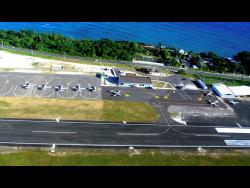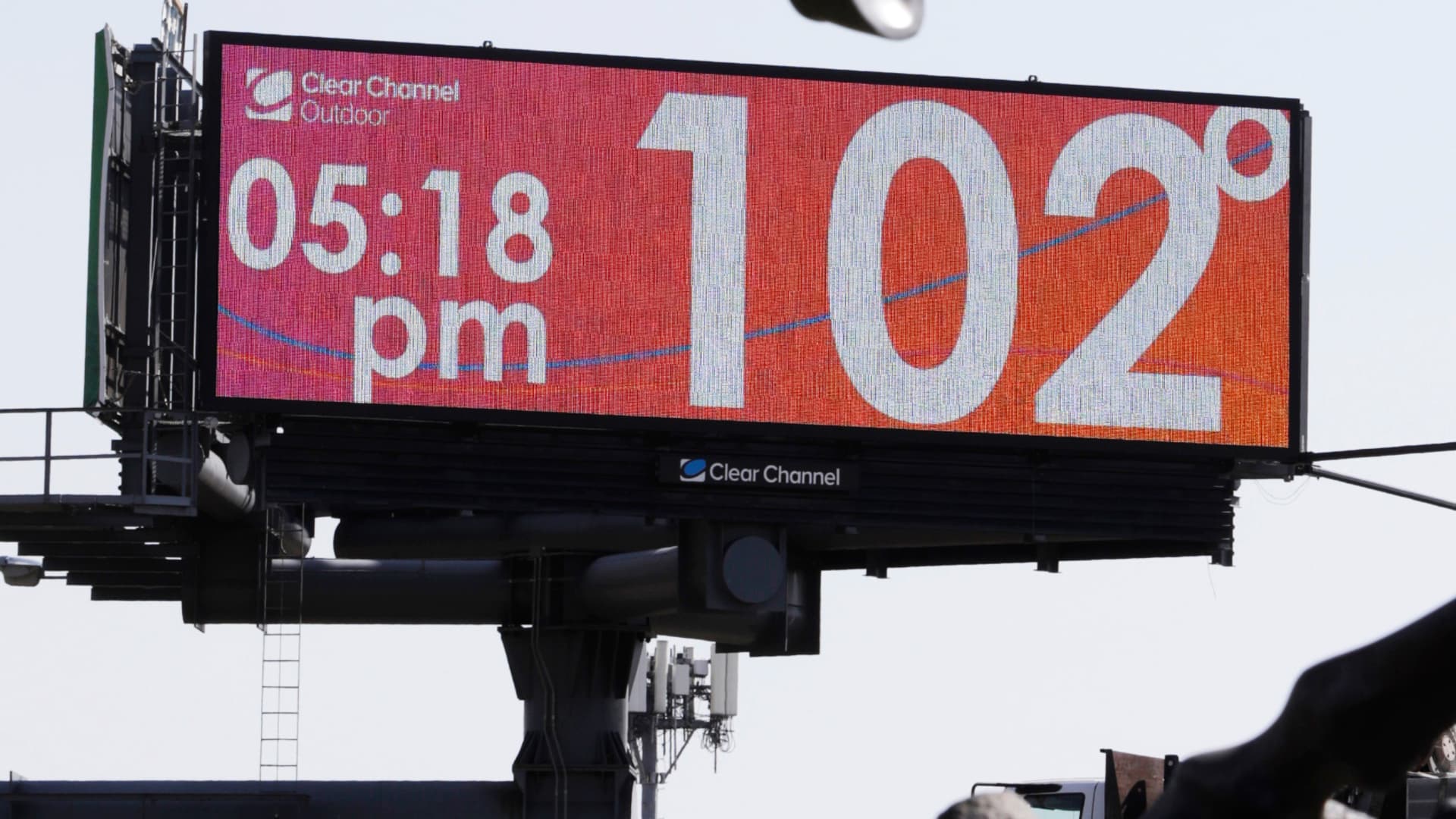By Jovan Johnson – Senior Staff Reporter,The Sunday Gleaner
Copyright jamaica-gleaner

Jamaica’s three domestic aerodromes – Negril, Ken Jones, and Tinson Pen – together with Ian Fleming International Airport (IFIA), have accumulated nearly J$2 billion in maintenance, security, and repair costs over the past six years. According to Airports Authority of Jamaica (AAJ) figures obtained by The Sunday Gleaner, that sum is almost three times greater than the total revenues these facilities generated during the same period.
From 2020 to 2025, the aerodromes and IFIA recorded J$705 million in combined revenue. Meanwhile, outlays for repairs, maintenance, and security totalled J$1.87 billion.
The disproportionate spending underscores the heavy burden borne by taxpayers to keep the four state-owned facilities operational – even as passenger traffic remains low or erratic. The figures have strengthened calls for a more assertive approach to ensuring that public investments in aviation yield meaningful returns: either by cultivating sustained airline interest or revisiting the strategic rationale for such heavy expenditures.
The AAJ, however, stands by its management approach, emphasising “efficiency and fiscal prudence”. It acknowledges that the facilities are “not currently operating at a profit”, but asserts they serve a vital role in national connectivity, tourism development, disaster response, and regional growth.
“The four AAJ-operated airport/aerodrome facilities, Ian Fleming International Airport (IFIA), and the Negril, Tinson Pen, and Ken Jones aerodromes, currently operate below their maximum capacity. While traffic volumes are not yet at optimal levels, these facilities serve as vital components of Jamaica’s national air transport infrastructure,” the agency said in written responses to Sunday Gleaner queries.
The Negril Aerodrome is located in Hanover; Ken Jones in Portland; and IFIA in Boscobel, St Mary – all three considered key to Jamaica’s tourism product. The fourth facility, Tinson Pen, sits in Kingston, adjacent to the country’s main ports in the Marcus Garvey Drive area.
The lion’s share of revenues
Of the four, Tinson Pen was responsible for the lion’s share of revenues, generating J$649.3 million between 2020 and 2025. In that same period, it incurred J$210.6 million in repairs and maintenance, and J$252.1 million in security costs.
IFIA collected J$52.8 million in revenue but spent J$643.5 million on maintenance and J$244.1 million on security.
Negril Aerodrome posted a mere J$3.3 million in revenue, while racking up J$198.7 million in maintenance and J$88.6 million in security.
Ken Jones returned just J$383,000 in revenue but incurred J$222.2 million in maintenance and J$19.3 million in security expenses.
The AAJ did not provide comparable figures for the years before 2020 requested by The Sunday Gleaner.
The high cost at IFIA is likely linked to the launch of American Airlines’ Miami-Boscobel service.
Passenger movement data show that Negril handled 27,467 passenger movements between 2020 and 2024, including the pandemic years. Annual traffic rose from 2,658 in 2020 to 7,359 in 2023 before sliding slightly to 7,273 in 2024. By comparison, between 2017 and 2019, Negril averaged fewer than 1,000 passengers annually.
IFIA, which opened in 2011, displayed the most dramatic rebound. It handled fewer than 1,600 passengers per year from 2020 to 2023. But in 2024, traffic leapt to 13,686, pushing the five-year total to 17,177. The AAJ credits this rise to daily American Airlines service from Miami and expanded charter flights by TimAir and AirLink Express linking Negril and other destinations. Tinson Pen saw just 1,288 passengers over the five years, while Ken Jones recorded only 145 – reflecting their limited roles in commercial service.
Aircraft movements mirror these trends. Negril consistently led with between 4,875 and 7,664 take-offs and landings annually; Tinson Pen followed, peaking at 4,496 in 2022; and IFIA surged only in 2024 with 2,446 movements, up from 384 in 2020. Ken Jones lagged far behind, sliding to just 21 movements in 2024.
Captain Edward Miller, head of the Jamaica Aviators Operators and Pilots Association, said the data prove the scale of Jamaica’s decline.
“Right now we are a shadow of what we used to be,” he told The Sunday Gleaner, arguing that the domestic aviation industry must be rebuilt with lower costs and modernised regulations.
The AAJ’s investment records confirm a heavy focus on IFIA. Between 2021 and 2025, the airport attracted US$9.37 million in infrastructure projects, far outstripping allocations to the other aerodromes.
Ken Jones received US$1.1 million, Tinson Pen US$1.01 million, and Negril just US$698,000 over the same period.
A significant uptick
The disproportionate spending highlights the Government’s push to market IFIA as an international gateway for the Ocho Rios tourism belt, though its traffic only recently showed a significant uptick.
Miller said Jamaica cannot limit its vision to tourism alone and that policy must grasp a more aggressive and comprehensive approach of the value of the aviation industry.
“One of the first issues that we need to overcome is the perception of the role of aviation in the Jamaican ecosystem or economy. For better or for worse, the focus that we have is on tourism and it has become very clear to us that aviation is seen as a support system for tourism and it’s not recognised that the aviation economy … is its own industry and that tourism is one of its customers.”
Despite the investments, aerodrome revenues remain modest. Between 2020 and 2025, Tinson Pen accounted for the bulk, generating $649.3 million; IFIA brought in $52.8 million; Negril earned just $3.3 million; and Ken Jones contributed a mere $383,000.
By contrast, repair and maintenance costs ballooned from $44.8 million in 2020 to $524.9 million in 2025, reaching a cumulative $1.27 billion. Security costs added another $604 million. Together, the combined $1.87 billion in upkeep nearly triples the aerodromes’ revenue base.
Those costs, Miller said, highlight the urgent need for reforms.
“We need to be in an environment that is conducive for growth and that regulatory environment needs to be reviewed and rectified and [the] financial environment needs to be reviewed and allow people to invest and expect a return on the investment. Once you do that, … the aircraft ownership movements would increase.”
Though the issue is now getting attention, he pointed to delays in Jamaica ratifying the Cape Town Convention, which would give persons or entities who lease aircraft confidence in recovering their assets. He also highlighted the need to implement Article 83 bis of the Chicago Convention, allowing regulatory oversight of foreign-registered aircraft to be transferred locally.
Expansion is necessary
Even as costs outpace income, AAJ says expansion is necessary. At Negril Aerodrome, plans include expanding the aircraft parking ramp, developing platforms on lands leased from the Urban Development Corporation, and building a new domestic passenger terminal.
The AAJ also noted that a master plan for a proposed Negril International Airport at Little London, Westmoreland, has been completed and is under review.
It will take “between five to seven years before the first plan lands there,” said Audley Deidrick, the president and CEO of the AAJ at last week’s Jamaica Product Exchange in St James. He pointed to different phases of work that cover master plan, business planning, development and implementation and operational rollout.
For IFIA, future projects include terminal expansion, an eastern parking ramp, new firefighting equipment, and securing a fixed-base operator for private aviation services.
The authority added that it is pursuing airline partnerships through global industry events like Routes Americas and is studying the feasibility of reviving a domestic carrier. The authority also said it is conducting market research with the view to resuscitate the domestic commercial airline service.
“Discussions are also taking place with airlines operating in the Caribbean region for use of IFIA as a airport gateway into the Ocho Rios catchment area,” it added.
Miller agreed that Negril holds major potential. He noted that an international facility could “allow people, the tourists that are going into that region, much easier access initially to the Negril Strip, but not only Negril, but also all the way as far as Treasure Beach.”
Despite the high costs, aviation stakeholders, including the Aviator Operator Pilots Association, note the aerodromes’ importance in national emergencies, recalling that after Hurricane Gilbert in 1988, when roads and utilities were crippled, small aircraft from Tinson Pen were among the few able to fly nonstop to deliver relief supplies and evacuate people.
“If we’re in a situation let us say you want to get response personnel in quickly and roads are blocked for example but the runway happens to be clear, the run way wasn’t affected, then it certainly would be a quick way to get emergency personnel into an area,” said Dr Barbara Carby, a disaster risk management expert and former head of Jamaica’s disaster agency.
While the AAJ said overall challenges have been “minimal”, it acknowledged theft of perimeter fencing and bird hazards linked to a nearby municipal dump at Tinson Pen. Enhanced security and mitigation steps have since been taken, it said.
Miller, however, cautioned against relocating the Kingston facility, a move announced by Prime Minister Dr Andrew Holness as a bid to allow for port expansion. “Tinson Pen now, that is a very sore point in a lot of people. We don’t want to be relocated. We would love to see it revitalised. We’d love to see it go back to what it used to be in the early 2000s.”
He stressed the airport’s strategic location, noting that “Tinson Pen being where it is, it’s within 15, 20 minutes, 30 minutes at the most from all the finance, the economic centres, financial centres, downtown, New Kingston.”
The staffing complement across the facilities expanded from 41 in 2020/21 to 60 in 2024/25. IFIA grew from 15 to 21; Tinson Pen from 14 to 20; Negril from 4 to 12; and Ken Jones remained broadly steady.
The AAJ did not disclose salary figures but said the numbers reflect the need to manage expanding infrastructure.
AAJ maintains that the aerodromes’ value cannot be judged by revenues alone, citing their roles in cargo, emergency response, and resilience. “These facilities serve as vital components of Jamaica’s national air transport infrastructure,” it said.
But Miller said vision is critical. “With the proper vision, and the proper environment, the investment will bear fruits. And the vision, not only is to serve Jamaica, it’s a very, very broad [vision]. It would serve the region, and also be an international player.”
He pointed to Middle Eastern carriers as examples of what is possible. “Because of our location, we could explore models, such as Emirates, Etihad, Qatar, or Turkish, where the majority of their traffic is through traffic,” Miller said, noting that less than 10 per cent of passengers on some of those airlines even stay in their home countries.
Drawing on his own career abroad, Miller added: “I worked in Saudi Arabia for eight years, and I saw firsthand how aviation was positioned as a driver of economic growth. That kind of vision is what Jamaica needs if we are to become more than just a tourism support system.”
jovan.johnson@gleanerjm.com



